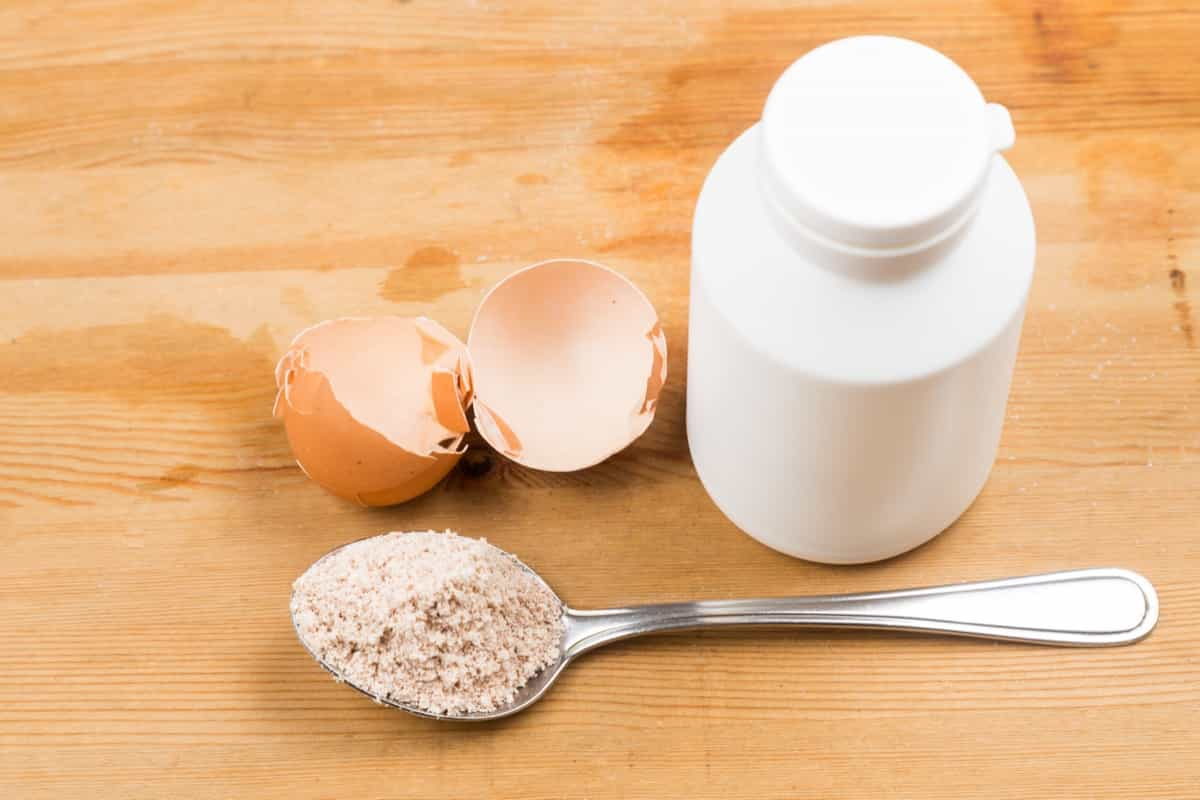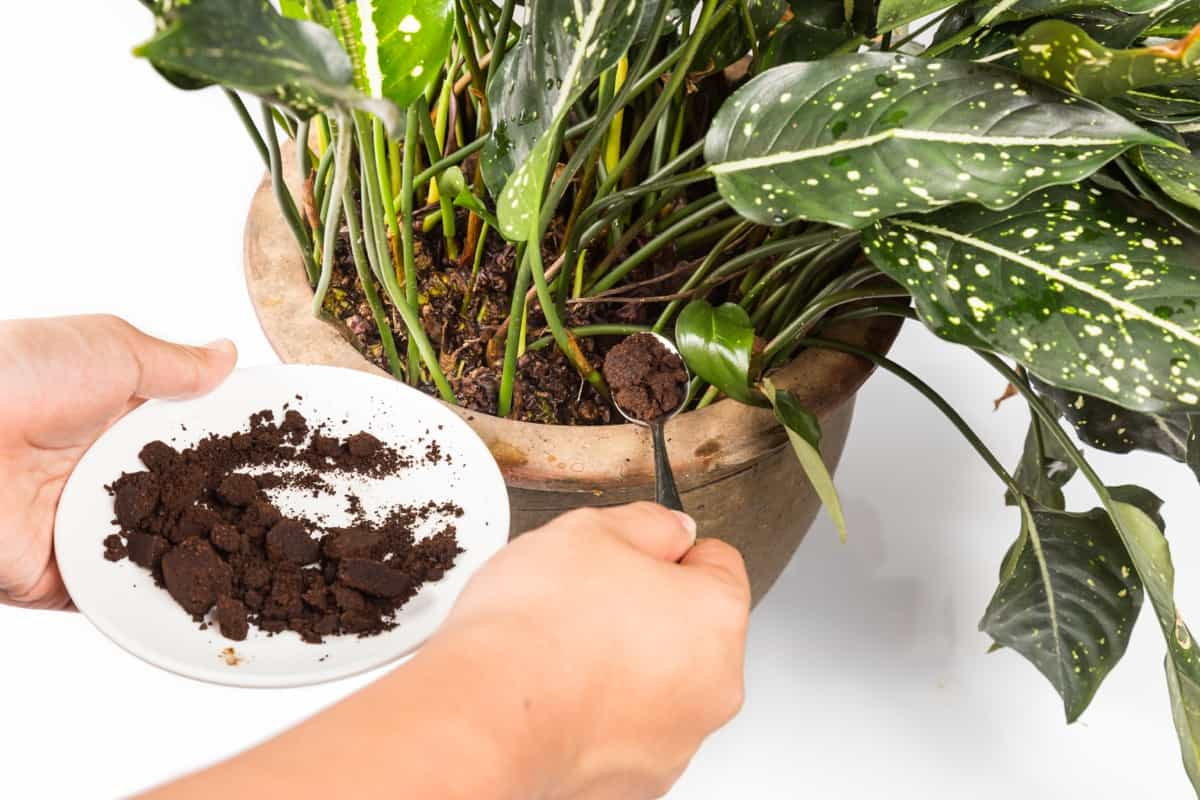Looking for a natural and affordable way to boost the growth and flowering of your plants? Look no further than DIY homemade soil fertilizer and flower boost recipes! You can use many recipes, depending on your plant type and the nutrients needed. Some popular ingredients include:
| Compost Tea | Pine Needle Mulch |
| Banana Peel Fertilizer | Banana Water |
| Epsom Salt Solution | Manure Tea |
| Eggshell Powder | Fym Manure |
| Seaweed Extract | Fireplace Ash |
| Coffee Grounds | Cow Urine Fertilizer |
| Fish Emulsion | Tomato Leaf Tea |
| Worm Castings | Vinegar Solution |
| Molasses Solution | Molasses and Epsom Salt Mix |
| Wood Ash | Green Tea Fertilizer |
| Alfalfa Meal | Powdered Milk Solution |
| Nettle Tea | Fish Bone Meal |
| Comfrey Tea | Vegetable Scrap Broth |
| Bone Meal | Aloe Vera Juice |
| Green Manure | Azomite |
These recipes are easy to make and can fertilize your plants at home. They are also a great way to reduce waste and add nutrients to the soil. This blog will share some DIY homemade soil fertilizer and flower boost recipes. Whether you are a beginner gardener or a seasoned one, try some of these recipes and see how they can help your plants thrive.
DIY Homemade Soil Fertilizers
Banana Peel Fertilizer
Collect banana peels and chop them into small pieces. Bury the pieces in the soil around your plants or create a banana peel tea by soaking the peels in water for a few days and then using the liquid as a fertilizer. As the peels decompose, they release nutrients like potassium, phosphorus, and calcium, promoting flowering and overall plant health.
In case you missed it: The Best Lawn Grass Fertilizers Guide: Nourishing with Organic, Slow Release, Natural, and Quick Release Fertilizers

Epsom Salt Solution
Dissolve Epsom salt in water and use it as a foliar spray for garden plants or soil drenches. Epsom salt provides magnesium and sulfur, which are essential for flower production. This solution can improve nutrient uptake, enhance chlorophyll production, and increase the vibrancy and quantity of blooms in flowering plants.
Comfrey Tea
Harvest comfrey leaves, chop them into small pieces, and steep them in water for several weeks. Dilute the resulting liquid and use it as a fertilizer for flowering plants. Comfrey tea supplies a variety of nutrients, including nitrogen, potassium, and phosphorus, which support robust growth, improve flowering, and contribute to overall plant vitality.
Bone Meal
Sprinkle bone meal around the base of your plants, avoiding direct contact with the foliage. Bone meal is a natural phosphorus source, crucial for flower development. This organic fertilizer helps plants produce vibrant, long-lasting blooms and strengthens their overall structure.
Compost Tea
To make compost tea, steep compost in water for a few days, then strain out the solids. Use the resulting liquid as a foliar spray or soil drench to boost soil fertility and provide a rich source of nutrients for your plants. Compost tea enhances microbial activity, improves nutrient uptake, and promotes healthy plant growth and flowering.
Eggshell Powder
Collect eggshells and grind them into a fine powder. Sprinkle or apply the powder around the base of your garden plants or incorporate it into the soil. Eggshell powder is rich in calcium, supporting root development and strengthening cell walls, improving flowering and overall plant vitality.
In case you missed it: The Impact of Nano Fertilizers in Agriculture for More Yields and High Profits

Seaweed Extract
Seaweed Extract: Gather seaweed, rinse it to remove excess salt, and blend it with water to create a liquid extract. Apply the seaweed extract as a foliar spray or soil drench to provide plants with a wide range of nutrients, including trace minerals, vitamins, and growth-promoting hormones. Seaweed extract stimulates root growth, enhances nutrient absorption, and encourages abundant flowering.
FYM Manure
Apply farmyard manure (FYM) to the soil around your flowering plants. FYM is a nutrient-rich organic fertilizer that improves soil fertility and structure. It provides essential nutrients, promotes microbial activity, and enhances plant health and flowering.
Manure Tea
Soak banana peels in water for a few days, then use the resulting liquid as a natural liquid fertilizer. Banana water contains nutrients like potassium, phosphorus, and calcium, which promote flowering and overall plant health. Apply it as a soil drench or foliar spray to boost your plants’ nutrients.
Cow Urine Fertilizer
Dilute cow urine with water and use it as a nitrogen-rich fertilizer for your plants. Cow urine contains nitrogen, a vital nutrient for plant growth and flower development. This natural fertilizer promotes lush foliage, abundant blooms, and plant vigor.
Molasses and Epsom Salt Mix
Combine molasses, Epsom salt, and water to create a nutrient-rich plant solution. Apply this mixture as a soil drench or foliar spray. Molasses provides sugars that feed beneficial soil microorganisms, while Epsom salt supplies magnesium and sulfur. This combination enhances nutrient availability, supports healthy plant growth, and improves flowering.
Green Tea Fertilizer
Brew green tea using tea bags or loose leaves, then let it cool. Use the liquid as a natural fertilizer for flowering plants by applying it as a foliar spray or soil drench. Green tea contains beneficial compounds and trace nutrients that promote plant growth, increase flower production, and boost overall plant vitality.
Fireplace Ash
Scatter fireplace ash around the base of your plants, taking care not to overapply it. Fireplace ash is a soil amendment that increases potassium levels and can help adjust soil pH. Fireplace ash contributes to improved flowering and healthy plant growth by supplying potassium and influencing pH.
Coffee Grounds
After brewing coffee, spread the used coffee grounds around your plants or mix them into the soil. Coffee grounds add organic matter, improve soil structure, and supply nitrogen, potassium, and phosphorus nutrients. These benefits contribute to healthier plants, improved flowering, and an added immune boost.
In case you missed it: Chilli Fertilizer Schedule: How and When to Apply Organically, Inorganically for More Yields

Fish Emulsion
Dilute fish emulsion with water according to the package instructions and use it as a fertilizer for your plants. Fish emulsion provides a rich source of nutrients, including nitrogen, phosphorus, and trace minerals. Regular application of fish emulsion promotes vigorous plant growth, increased flower production, and overall plant health.
Tomato Leaf Tea
Soak tomato leaves in water for a few days to create tomato leaf tea. Use the resulting liquid as a foliar spray to boost plant health and enhance flowering. Tomato leaf tea contains alkaloids and other compounds with natural insect-repellent properties and can contribute to improved flower production.
Vinegar Solution
Soak tomato leaves in water for a few days to create tomato leaf tea. Use the resulting liquid as a foliar spray to boost plant health and enhance flowering. Tomato leaf tea contains alkaloids and other compounds with natural insect-repellent properties and can contribute to improved flower production.
Worm Castings
Apply worm castings directly to the soil around your plants or mix them into potting soil. Worm castings are a nutrient-rich organic fertilizer that contains beneficial microbes. These microbes improve soil fertility, enhance nutrient availability, and support healthy root development, improving flowering and plant vitality.
In case you missed it: How to Use Bone Meal Fertilizer in the Garden: Benefits, When and How to Apply

Molasses Solution
Molasses Solution: Mix molasses with water and use it as a soil drench for your plants. The sugars in molasses act as a food source for beneficial soil microorganisms, fostering their growth and activity. This promotes nutrient cycling, improves soil structure, and enhances plant health and flowering.
Wood Ash
Sprinkle wood ash around the base of flowering plants, taking care not to overapply it. Wood ash is a natural potassium source and helps raise soil pH levels. Wood ash contributes to better flower development, vibrant blooms, and overall plant vigor by providing potassium and adjusting pH, particularly in plants like roses.
Green Manure
Sow fast-growing cover crops like clover, buckwheat, or legumes in your garden. Before the plants reach maturity and flower, cut them down and incorporate the green plant material into the soil. Green manure enriches the soil with organic matter, adds nutrients, and improves soil structure, enhancing flowering and long-term soil fertility.
Pine Needle Mulch
Spread pine needles as a mulch around your flowering plants. Pine needles gradually decompose, contributing organic matter to the soil. They also help acidify the soil, creating favorable conditions for acid-loving plants and providing a beneficial environment for healthy flower development.
Banana Water
Soak banana peels in water for a few days, then use the resulting liquid as a natural liquid fertilizer. Banana water contains nutrients like potassium, phosphorus, and calcium, which promote flowering and overall plant health. Apply it as a soil drench or foliar spray to boost your plants’ nutrients.
Alfalfa Meal
Spread alfalfa meal around the base of your plants and gently work it into the soil. Alfalfa meal is a slow-release source of nitrogen and contains other trace minerals. This organic fertilizer promotes steady growth, improves soil fertility, and supports healthy flower formation in flowering plants.
Grass Clippings
After mowing your lawn, spread the grass clippings around your plants or mix them into the soil. Grass clippings decompose quickly, releasing nitrogen into the soil. This nitrogen boosts plant growth, supports vigorous flowering, and improves plant health.
In case you missed it: Mustard Cake Fertilizer Uses in the Garden: Step-By-Step Process, Plant Benefits, and Application Method

Aloe Vera Juice
Extract the juice from aloe vera leaves and dilute it with water. Use the mixture as a foliar spray to enhance plant growth and flowering. Aloe vera juice contains natural growth stimulators, vitamins, and minerals that promote robust foliage, increased flower production, and overall plant vigor.
Powdered Milk Solution
Dissolve powdered milk in water and use the solution as a foliar spray to provide calcium and other nutrients to your plants. Calcium is essential for cell structure and flower development. Powdered milk solution supports healthy growth, strengthens plant tissues, and enhances flower quality.
Fish Bone Meal
Apply fish bone meal to the soil around your flowering plants. Fish bone meal is a natural fertilizer that enriches the soil with phosphorus and calcium, supporting flower development and overall plant health. It also contributes to improved root growth and nutrient absorption.
Vegetable Scrap Broth
Collect vegetable scraps and simmer them in water to create a nutrient-rich broth. After cooling and straining, use the vegetable scrap broth as a soil drench for added fertility. This organic liquid fertilizer supplies a variety of nutrients, promoting healthy plant growth, improved flowering, and increased soil vitality.
Azomite
Apply Azomite, a natural mineral powder, to the soil around your plants to provide trace minerals that promote healthy plant growth and flowering. Azomite contains various beneficial minerals, including calcium, magnesium, iron, and zinc. These minerals support essential plant functions, improve flower formation, and increase plant vitality.
Nettle Tea
Steep nettle leaves in water for a few days to create nettle tea. Use this tea as a foliar spray or soil drench to stimulate plant growth and enhance flowering. Nettle tea provides a range of nutrients, including nitrogen, potassium, iron, and calcium, promoting healthy foliage, abundant blooms, and increased resistance to pests and diseases.
In case you missed it: Rock Phosphate in Agriculture: Fertilizer Uses, Composition, and Application for Plants

Best Time to Apply DIY Homemade Soil Fertilizers and Flower Boost Recipes for the Home Garden
- Foliar Sprays: Apply foliar sprays during the early morning or late afternoon when the weather is cooler and humidity is lower. This allows the leaves to absorb the spray effectively without the risk of evaporation.
- Soil Drenches: Apply soil drenches in the evening or early morning when the soil is moist but not waterlogged. This ensures proper absorption and minimizes the risk of nutrient leaching.
- Flower Boosters: Apply flower boosters during the early flowering stages or when buds form. This provides the plants with the necessary nutrients to support robust flower development.
- Regular Application: Follow the recommended application frequency mentioned in each recipe for optimal results. Some sprays may need to be applied weekly, while others may be applied monthly or as needed.
- Avoid Extreme Weather: Avoid applying sprays during extreme heat, strong winds, or heavy rainfall. Extreme weather conditions can reduce the effectiveness of the sprays and wash away the nutrients.
Conclusion
DIY homemade soil fertilizers and flower boost recipes offer a cost-effective and sustainable way to enhance soil fertility and promote flowering in home gardens. Gardeners can enjoy healthier plants and vibrant blooms throughout the growing season by utilizing natural ingredients and following proper storage and application techniques.
- How to Build a Low-budget Goat Shed: Cheap Ideas and Tips
- Goat Farming Training Programs in India: A Beginner’s Guide
- Types of Pesticides Used in Agriculture: A Beginner’s Guide
- Economical Aquaculture: A Guide to Low-Budget Fish Farming
- 15 Common Planting Errors That Can Doom Your Fruit Trees
- How to Make Houseplants Bushy: Effective Tips and Ideas
- Innovative Strategies for Boosting Coconut Pollination and Yield
- Pollination Strategies for Maximum Pumpkin Yield
- The Complete Guide to Chicken Fattening: Strategies for Maximum Growth
- Natural Solutions for Tulip Problems: 100% Effective Remedies for Leaf and Bulb-Related Issues
- Revolutionizing Citrus Preservation: Towards a Healthier, Greener Future
- Natural Solutions for Peony Leaf and Flower Problems: 100% Effective Remedies
- Maximizing Profits with Avocado Contract Farming in India: A Comprehensive Guide
- Natural Solutions for Hydrangea Problems: 100% Effective Remedies for Leaf and Flowers
- The Ultimate Guide to Choosing the Perfect Foliage Friend: Bringing Life Indoors
- From Sunlight to Sustainability: 15 Ways to Use Solar Technology in Agriculture
- The Ultimate Guide to Dong Tao Chicken: Exploring from History to Raising
- The Eco-Friendly Makeover: How to Convert Your Unused Swimming Pool into a Fish Pond
- Mastering the Art of Delaware Chicken Farming: Essentials for Healthy Backyard Flocks
- 20 Best Homemade Fertilizers for Money Plant: DIY Recipes and Application Methods
- How to Craft a Comprehensive Free-Range Chicken Farming Business Plan
- Brighten Your Flock: Raising Easter Egger Chickens for Beauty and Bounty
- How to Optimize Your Poultry Egg Farm Business Plan with These Strategies
- Subsidy for Spirulina Cultivation: How Indian Government Schemes Encouraging Spirulina Farmers
- Ultimate Guide to Raising Dominique Chickens: Breeding, Feeding, Egg-Production, and Care
- Mastering the Art of Raising Jersey Giant Chickens: Care, Feeding, and More
- Ultimate Guide to Raising Legbar Chickens: Breeding, Farming Practices, Diet, Egg-Production
- How to Raise Welsummer Chickens: A Comprehensive Guide for Beginners
- How to Protect Indoor Plants in Winter: A Comprehensive Guide
- Ultimate Guide to Grow Bag Gardening: Tips, Tricks, and Planting Ideas for Urban Gardeners
- Guide to Lotus Cultivation: How to Propagate, Plant, Grow, Care, Cost, and Profit
- Agriculture Drone Subsidy Scheme: Government Kisan Subsidy, License, and How to Apply Online
- Ultimate Guide to Raising Araucana Chickens: Breed Profile, Farming Economics, Diet, and Care
- Bringing Hydroponics to Classroom: Importance, Benefits of Learning for School Students
- Ultimate Guide to Raising Polish Chickens: Breed Profile, Farming Economics, Diet, and Care
- Ultimate Guide to Raising Australorp Chickens: Profile, Farming Economics, Egg Production, Diet, and Care